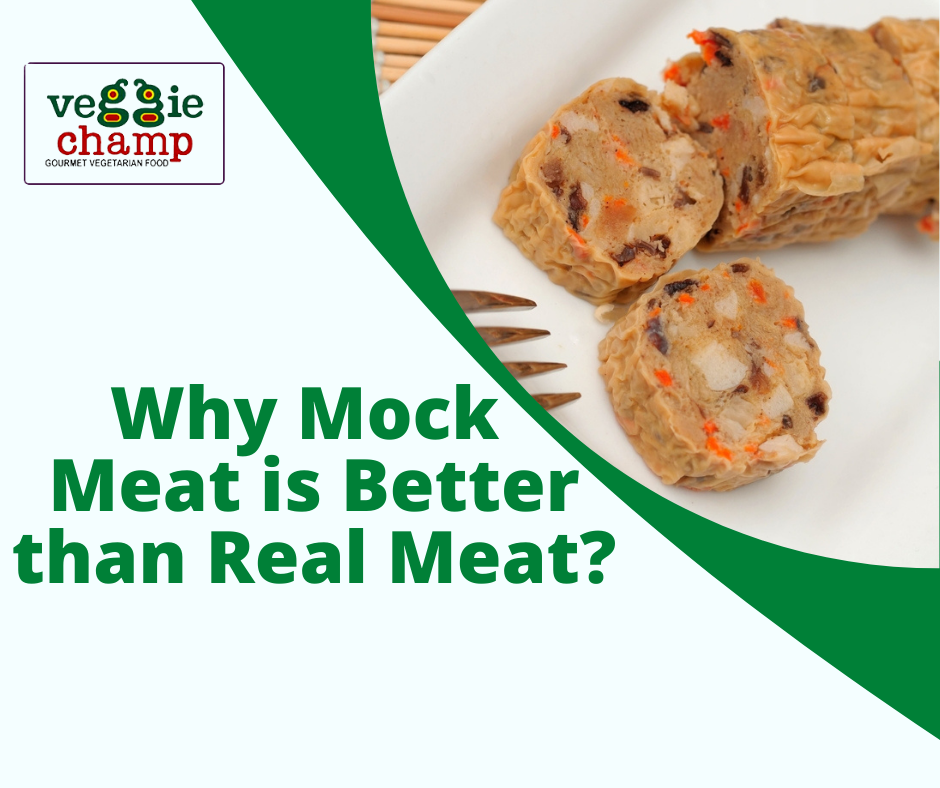
Why Mock Meat is Better than Real Meat?
Let’s begin with a definition of faux meat. Mock meat, often known as simply plant-based flesh, is indeed a cuisine made from vegetables and plant-related goods. Flesh analogs or flesh replacements that appear, smell, plus taste-alike meat are what these things are. Producers have been able to faithfully duplicate the flavor and density of meats in plant-based substitutes because of technological developments. Vegans have turned to mock meat composed entirely of vegetable derivatives as a source of protein. Plant-based meats that incorporate milk and egg whites, on the other hand, cannot be classified as vegan.
There is a large selection of plant-based meats products on the market. There has also been a surge inside the sector for plant-based meat substitutes in recent years. There is a wide range of vegetarian meal options available, including nuggets, hamburger patties, meatballs, kebabs, and much more. They include snacks and dinners that meet every one of the criteria for authentically non-vegetarian cuisine.
Mock meat has found a place inside the affections of many people throughout the globe, thanks to the emergence of social networking influencers, exercise enthusiasts, especially climate warriors. Plant-based meat alternatives have gained a lot of traction in recent years, especially among millennials and Generation Z.
Mock Meat versus Real Meat:
Upon that surface, it’s tough to tell the distinction between fake meat versus real flesh. That’s because the 2 have a lot of things in common.
To begin, plant-based meats are handled in a manner that has the same texture, structure, flavor, plus scent as real meats. When you test plant-based meats as well as actual meat side by side, you can’t resist but notice that the former tastes exactly like the latter.
However, there are some significant differences between the 2. The components for faux meat, for example, are all derived from vegetables. To fill up the protein content and generate the majority of plant-based meats, soy, peas, mushrooms, quinoa, pineapple, as well as other plant food are employed. Mock meat producers, meanwhile, frequently use a range of plant items to give texture, flavor, color, plus scent to their goods. To put the products on a similar level as actual meat, beetroot juice, coconut oils, gluten, plus spices are typically added.
In addition, imitation meat is cholesterol-free, offering it a healthy option. Animal meats are inherently high throughout cholesterol and have been related to an increased risk of heart disease.
Mock Meat’s Wellness Advantages:
Veggie Champ provides a better understanding of what constitutes a healthier life has evolved. There has also been a significant change into whatever we consider being a healthy practice, whether it is due to social networking, Covid-19, or perhaps a stressful work combination. The most straightforward method to acquire healthy habits is to consume your method to them.
Because imitation meat is made from vegetables, it is naturally high contains vegetable proteins and fiber, making it a healthier option.
A plant-based intake is generally beneficial to one’s well being because it eliminates the cholesterol and hormones associated with meat consumption.
Mock Meat Production (Steps plus Ingredients):
One of the most important aspects of making faux meats is to mimic the textures and flavor of real flesh. Plant-based proteins should be processed to achieve the desired consistency because they possess a distinct texture. Despite the comparison to more fiber animal protein, soy nutrients are aggregates as well as globular in form.
To achieve the same texture, deform the soy proteins, then run the combination via an extruder that reshapes its entire molecule structure. Plants protein is indeed combined with bonding agents including lipids to mimic the makeup of meats. This keeps the foodstuff together plus allows it to collect moisture, giving it a meaty feel. Ingredients taken from natural sources are used to create a meat-like taste. The major goal is to mimic the tenderness, stretchiness, and chewiness of meat items, as well as their flavor.
Plant-based flesh varies from actual meat inside one important way: its environmental impact. Raising cattle for meat consumption has a very negative impact on the environment. Large swaths of ground are stripped of plants to make way for grazed pastures, putting even more strain into an already stressed ecology. That’s why imitation meat is slowly gaining favor among those who prefer an environmentally friendly as well as a sustainable lifestyle.




